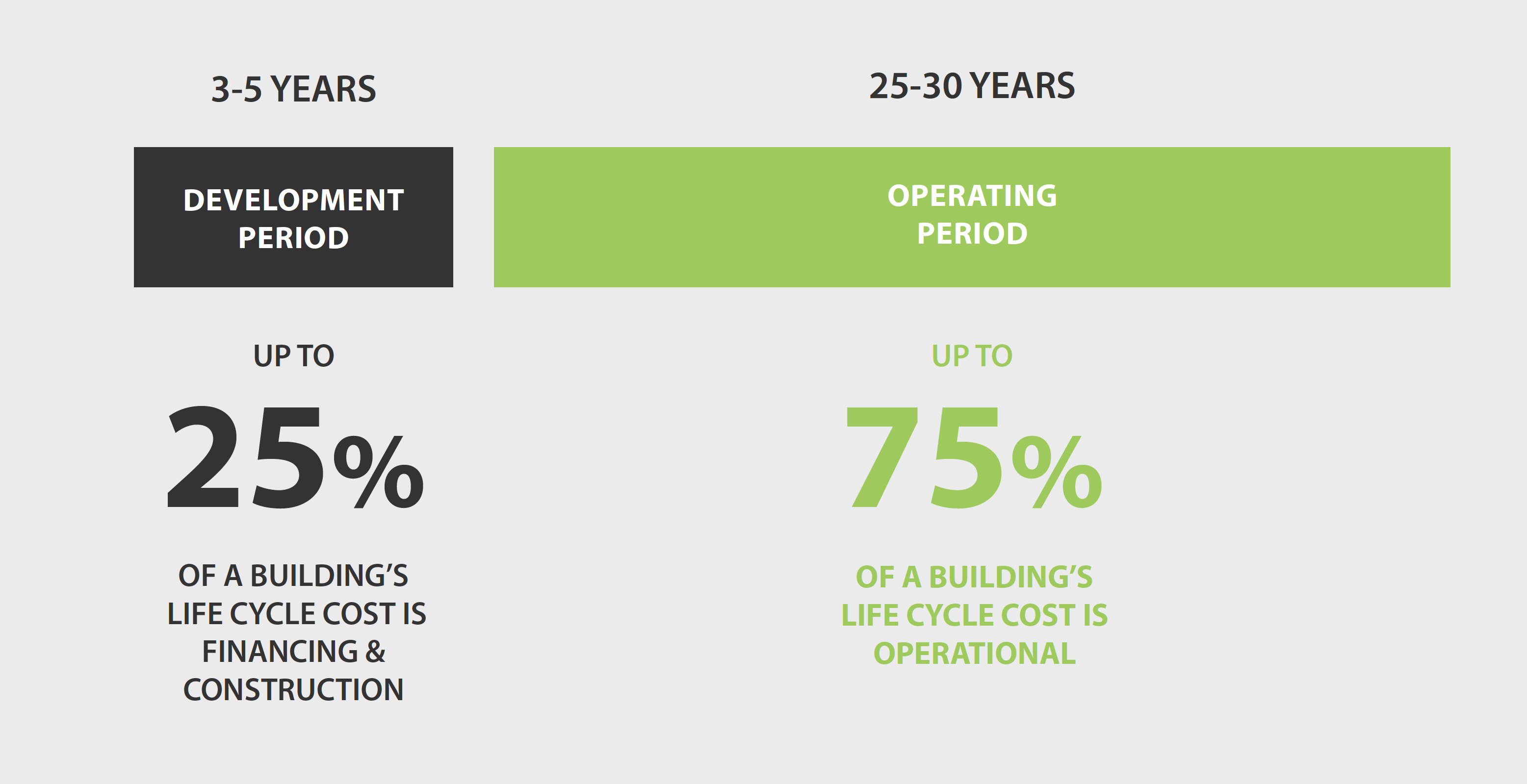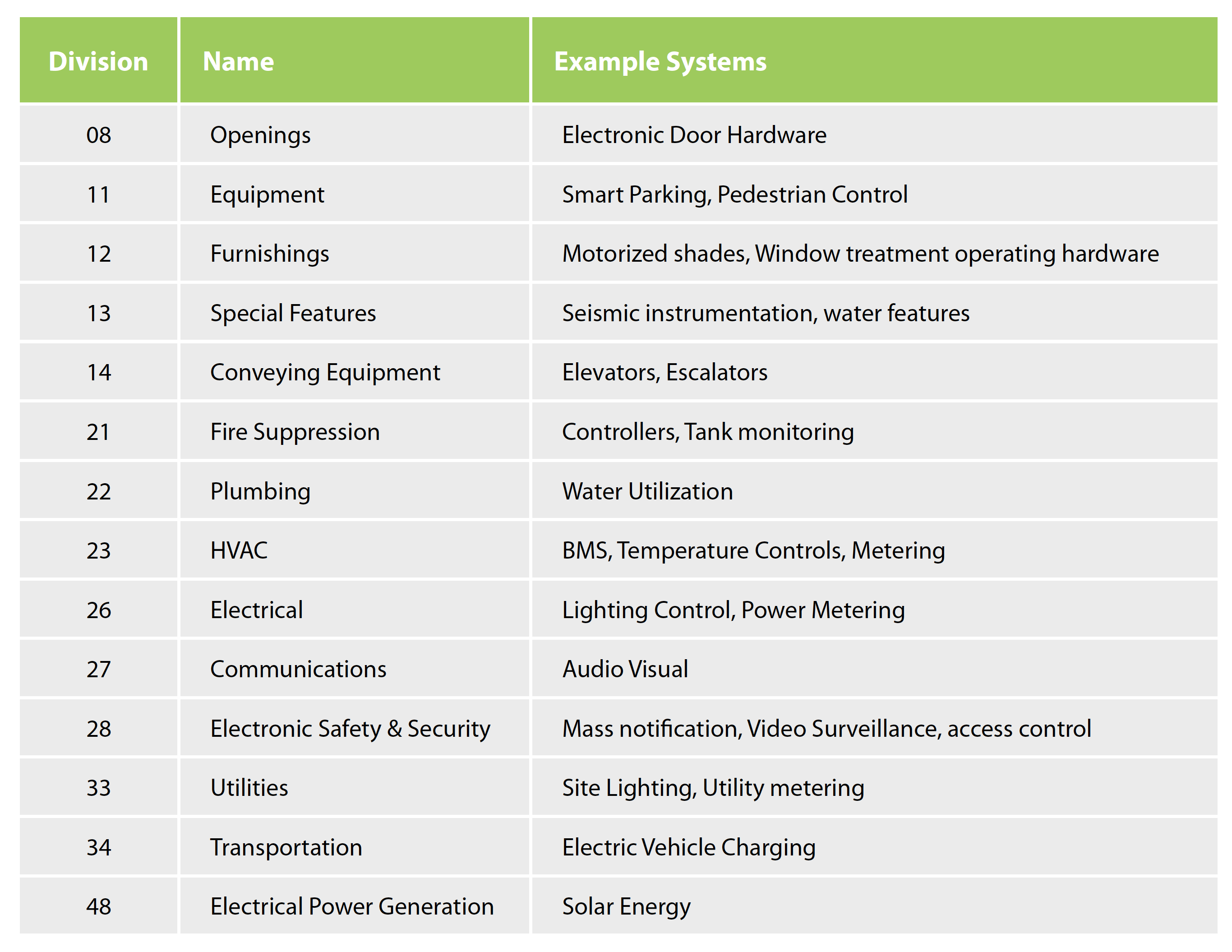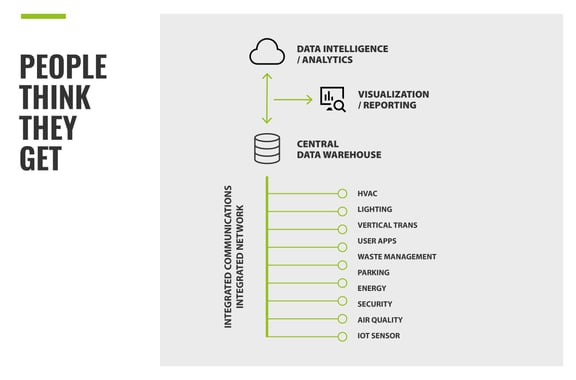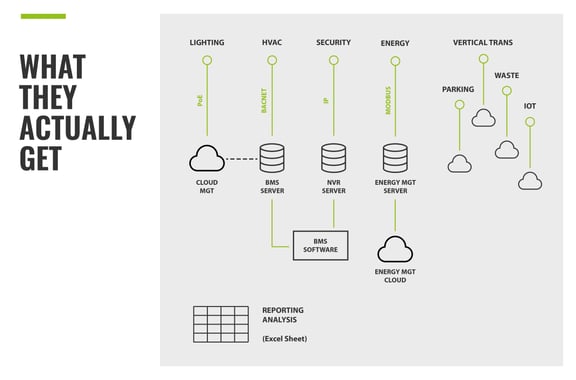The pressure on owners to deliver high performing buildings has never been greater. Buildings today need to be energy efficient, smart, flexible, promote health and wellness, and provide occupants with an immersive digital experience. The complexity of the built environment is increasing at an unprecedented rate.
To achieve ambitious goals for the built environment, owners and design professionals turn to network-connected systems. This approach is evident in the rise of the smart building market, growing at a 15.3% Compound Annual Growth Rate (CAGR) to $160 billion by 2026. The need for smart, connected building systems is clear.
More detailed subsystem data and more advanced automation capabilities help building owners reduce energy consumption, operate more cost-effectively, and develop more meaningful relationships with their occupants.
However, an investment in singular building system technologies is subject to diminishing returns. At best, the savings and performance improvements delivered by a single building system plateaus over time.
The deployment and operational model needs to change from siloed to integrated to obtain lasting value from connected building systems. According to the US Department of Energy, up to 75 percent of a building’s lifecycle cost is spent on operations and maintenance (Figure 1). If smart, connected building systems reduce the lifecycle cost in our facilities, today’s owners and design teams need to understand and prioritize systems integration.

Historically, building technologies like building management systems, lighting controls, energy management, electronic safety and security, audiovisual, and more have been designed and specified as individual systems and procured, installed, and commissioned in silos. As the rise in smart, network-connected systems increases in facilities, this design practice creates complexity and operations and maintenance challenges for owners once a facility is turned over. The design and construction process leaves owners with a disparate mix of individual building technologies, each of which has its own software platform, cloud services, cybersecurity requirements, programming needs, and data and reporting features. A simple review of specification divisions with network-connected or smart capabilities illustrates this challenge. (Figure 2)

Each system above could require a network connection, specialized programming and monitoring, ongoing cybersecurity oversight, and separate data on system usage and recommended improvements. No owner expects to maintain all these systems individually, and none of them are.
The availability of smart systems in today’s built environment creates a large gap between what owners believe they will receive in a modern, connected facility and what the current design and specification process is delivering to them.
Owners today are under the mistaken impression that the design and construction process will deliver a smart, integrated building in which systems communicate openly with one another and in which all data from the built environment is normalized and accessible for analysis and reporting. The reality of what they too often receive is fragmented and siloed.

For those familiar with the IT industry, this problem is familiar. If you look historically at the evolution of IT systems, you will recall that systems began to sprawl away from each other as they grew and developed over time. Before long, IT organizations had an entire IT stack of applications – finance, email, file storage, web, logistics, sales –developed by individual vendors that did not communicate with one another.

Fortunately, solutions emerged that integrated this disparate data and formed the foundation for the integrated manner business applications operate today.
To realize the benefits of smart buildings and recognize ongoing operational savings over a real estate asset’s lifecycle, owners need to require integrated systems. This requires augmentation to the traditional design process; the core methodology of producing construction drawings and specifications does not need to change, but the language used to specify building technologies needs to evolve to better meet the owner’s needs today for smart, high-performing buildings.
There are varying systems integration levels that range from simple exchanges of alarms to bidirectional information exchange and control capabilities with data analytics, machine learning, and artificial intelligence. Owners should define the level of integration they desire and then expect their design team to modernize the language of their drawings and specifications to deliver that integration.
At a minimum, that language should:
- Require systems that have an open Application Programming Interface (API),
- Define outcomes. Provide clarity on how building technologies will integrate and who is responsible for that integration,
- Update submittal requirements to include language on systems integration, cybersecurity, and more,
- Define the owner’s role in assisting with integration.
Systems Integration in the Built Environment Can Happen Post-Design
Suppose you have already completed the design process or even started construction. In that case, there is still an opportunity for you to determine the level of systems integration your facility can expect and to identify changes that meet your expectations for building performance. An Owner’s Integration Project Manager (OIPM), also called a Master Systems Integrator (MSI), can support this effort by:
-Validating your expectations for systems integration and building technologies
- Reviewing drawings, specifications, and submittals (if in construction)
- Descoping selected vendors and manufacturers (if in construction)
- Identifying gaps between your integration expectations and the current design and, if applicable, already procured solutions and making recommendations to achieve expectations.
The Path Forward
The path to creating smart, healthy, high-performing buildings relies on a rich set of building technologies. Without proper integration, those technologies will fail to deliver the type of rich experience that today’s occupants expect in the built environment. For owners and design professionals, adopting a new mindset toward the selection, design, and implementation of building technologies – one that prioritizes and provides for systems integration – is what will unlock the full potential of today’s facilities.